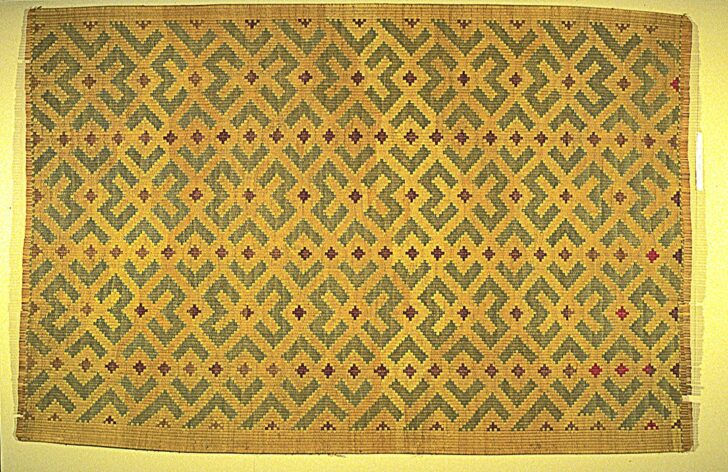Raffia Textile Panel
Kuba

Description
Throughout central Africa, there is a resonance between a cultures's two-dimensional and three-dimensional graphic and sculptural arts. For Kuba, Kongo, Luba, and other societies with pre-colonial kingdoms, for example, the same patterns that appear on the body as scarifications are often woven into mats, used on the walls and floors, and carved into wooden house panels and supports. The outsides of both house and body are thresholds to the secrets held within, and encode esoteric knowledge pertaining to royal history and culture. Some patterns are "signature" motifs referring to a particular king, while others bear names referring to proverbs or social relationships.
Subject Matter:
The Kuba are renowned for their elaborate, geometrical surface designs. One of the most impressive expressions of this aesthetic is cloth made from raffia fiber. In the 19th century, decorated raffia cloth was a marker of prestige, used as currency, to pay tribute, settle legal disputes, and in public displays such as the funerals of high-ranking titleholders—a practice that continues today. Produced also for the international market, Kuba cloth—and imitations of its designs—can be found in shops and private collections all over the world. This type of mat was used for sitting, sleeping or as a burial cloth. It was also used as a form of moveable architecture to define spaces for special events such as royal visits. The purple ink was probably derived using ink from discarded ditto machines.
Physical Description:
Rectangle panel with hemmed edges. The design consists of repetitive rectilinear shapes that form a grid. The top and bottom row consists of uneven chevrons, while there are rows in the middle of the panel that include small red diamonds.
Usage Rights:
If you are interested in using an image for a publication, please visit https://umma.umich.edu/request-image/ for more information and to fill out the online Image Rights and Reproductions Request Form.